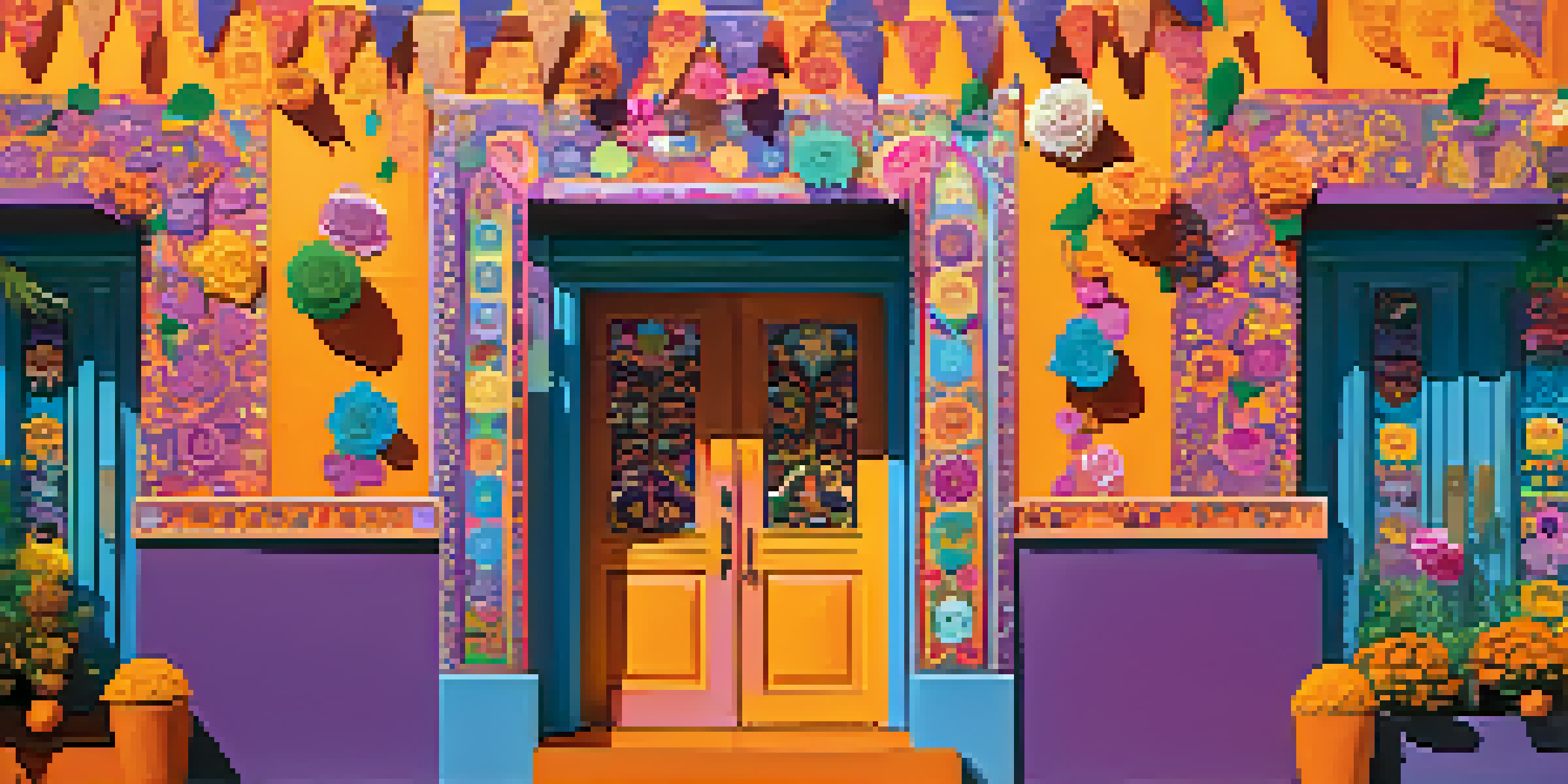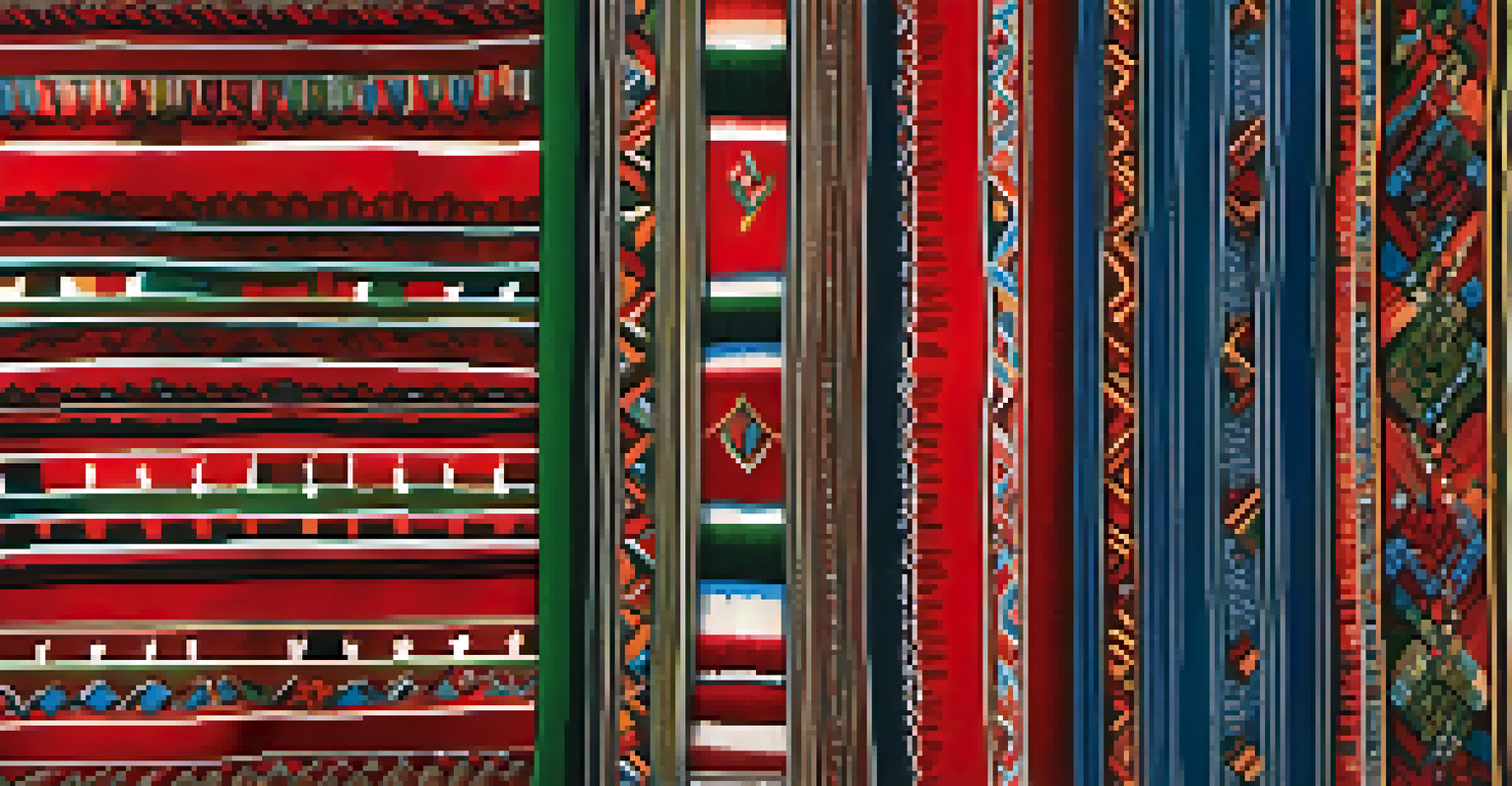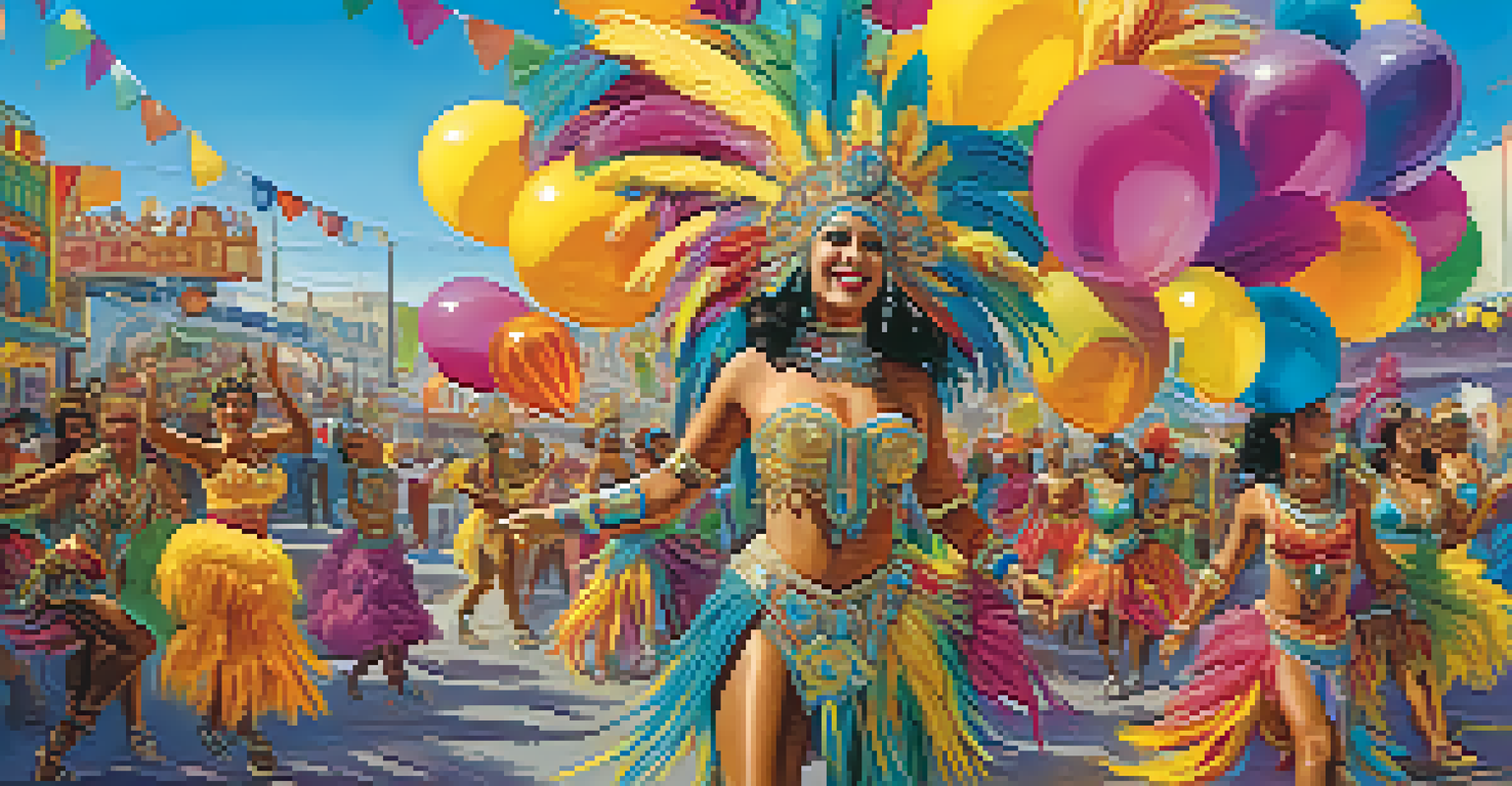The Use of Color in Latin American Art and Cultural Narratives

The Significance of Color in Latin American Culture
Color plays a pivotal role in Latin American culture, often representing emotions, traditions, and identities. From the rich hues of indigenous textiles to the vibrant murals in urban landscapes, each shade tells a story. For instance, the use of red may symbolize life and vitality, while blue often evokes peace and tranquility. These cultural interpretations of color help foster a deeper connection to community and heritage.
Color is the keyboard, the eyes are the harmonies, the soul is the piano with many strings.
Art in this region is not just about aesthetics; it's a vibrant expression of history and social commentary. Artists employ color to convey their experiences, frustrations, and hopes. This narrative aspect transforms simple art into a dialogue that resonates across generations, making it a crucial element in understanding Latin American identity.
Moreover, the interplay of colors in festivals and everyday life reflects the dynamic culture of Latin America. Whether it’s the bright colors of Día de los Muertos or the vivid palettes of Carnival, these celebrations showcase how color is woven into the very fabric of society.
Indigenous Influences on Color Usage
Indigenous cultures in Latin America have a profound influence on the use of color in contemporary art. Traditional techniques and natural pigments derived from plants, minerals, and insects have been passed down through generations. For instance, the brilliant cochineal dye, sourced from insects, produces a stunning red that has been utilized for centuries.

This deep-rooted connection to the land and its resources emphasizes sustainability and respect for nature. Artists often blend ancient practices with modern techniques, creating a unique fusion that honors their heritage while appealing to contemporary audiences. This practice not only preserves history but also revitalizes cultural pride.
Color Reflects Cultural Identity
In Latin American culture, color embodies emotions, traditions, and identities, creating a deep connection to community and heritage.
Additionally, the symbolism behind these colors often reflects the spiritual beliefs of indigenous peoples. For them, colors are not merely visual; they embody spiritual significance. This rich tapestry of meanings enriches Latin American art and provides layers of understanding for viewers.
The Impact of Colonialism on Color Representation
Colonialism brought about significant changes in the use of color within Latin American art. European colonizers introduced new materials and palettes, which were adopted and adapted by local artists. This blending of influences resulted in a unique aesthetic that reflects both indigenous and colonial heritages.
Art is the most beautiful of all lies.
However, this transition also led to complex narratives around color and identity. Artists often grappled with feelings of loss and adaptation as they navigated their new reality. The use of color became a medium to express resistance and reclaim cultural narratives, highlighting the struggles faced during and after colonization.
Today, many contemporary artists continue to explore these themes through their work. They use color to address issues of identity, social justice, and the ongoing effects of colonial history, making it a powerful tool for storytelling and activism.
Modern Interpretations of Color in Art
In contemporary Latin American art, color is often used to challenge norms and provoke thought. Artists like Frida Kahlo and Diego Rivera employed bold colors to address personal and political issues. Their works not only reflect their experiences but also invite viewers to engage with deeper societal questions.
Modern artists are increasingly experimenting with color, utilizing it to break away from traditional forms and explore new narratives. This willingness to innovate allows for a diverse range of expressions, reflecting the complexity of modern Latin American identities. For example, contemporary street artists use vibrant colors to transform urban spaces into platforms for dialogue and expression.
Art as Social Commentary
Artists in Latin America use color to address social issues, transforming their work into powerful commentary that encourages reflection and dialogue.
This evolution in color usage showcases the dynamic nature of Latin American art. Artists today continue to push boundaries, using color as a means of both celebration and critique, further enriching cultural dialogues.
Color as a Tool for Social Commentary
Artists in Latin America often use color to address pressing social issues, transforming their work into powerful commentary. Bright, striking colors can draw attention to themes of inequality, injustice, and environmental challenges. By using color intentionally, they create an emotional response that encourages viewers to reflect on these critical topics.
For example, the vibrant murals seen in cities like Mexico City often highlight social struggles and community resilience. These works not only beautify public spaces but also serve as a platform for activism and cultural expression. The choice of color becomes a voice for marginalized communities, amplifying their narratives.
Moreover, this approach to color in art fosters a sense of solidarity. When artists use their work to spotlight injustices, they invite audiences to engage in dialogue and inspire change. In this way, color transcends mere aesthetics, becoming a catalyst for social transformation.
The Role of Color in Cultural Festivals
Cultural festivals in Latin America are a vibrant showcase of color, where tradition and celebration intertwine. Events like Carnaval and Día de los Muertos highlight the importance of color in expressing joy, remembrance, and cultural identity. Each festival employs specific color schemes that resonate deeply with participants and attendees alike.
For instance, during Día de los Muertos, bright oranges, pinks, and purples dominate the scene, symbolizing the celebration of life and honoring the departed. These colors create a striking visual experience that conveys love and remembrance, enhancing the emotional weight of the occasion.
Festivals Celebrate Vibrant Colors
Cultural festivals like Carnaval and Día de los Muertos showcase the importance of color in expressing joy and honoring cultural identity.
Festivals also serve as a platform for artists to showcase their work, further emphasizing the role of color in community engagement. Through parades, performances, and artwork, participants collectively celebrate their heritage, reinforcing the idea that color is a vital part of cultural narratives.
Color in Latin American Art: A Continuous Journey
The use of color in Latin American art is a continuous journey that reflects the region's evolving identity. As artists draw inspiration from their past, they also explore contemporary issues, creating a rich dialogue between history and modernity. This interplay keeps the narrative alive and relevant, ensuring that the significance of color remains integral to cultural expression.
As we observe this evolution, it's clear that color serves not only as a visual tool but also as a bridge connecting diverse communities. Artists utilize color to tell stories, provoke thought, and inspire change, making it a vital aspect of both personal and collective identity.

Ultimately, the vibrant palette of Latin American art is a testament to resilience, creativity, and cultural richness. By understanding the power of color in these narratives, we gain a deeper appreciation for the experiences and histories that shape this beautiful region.